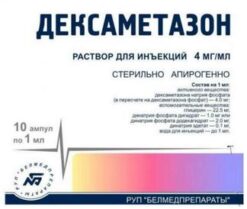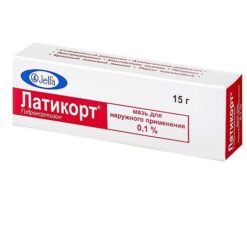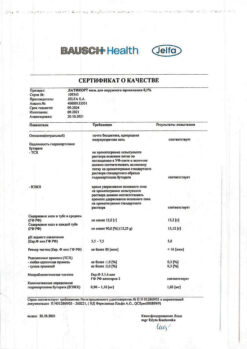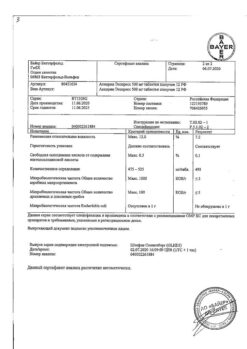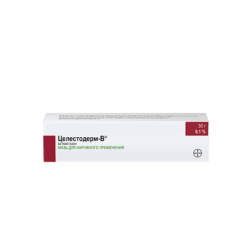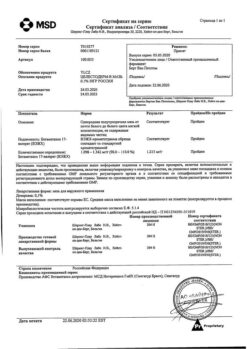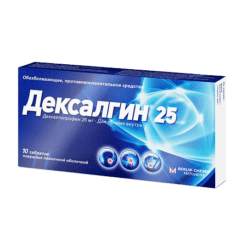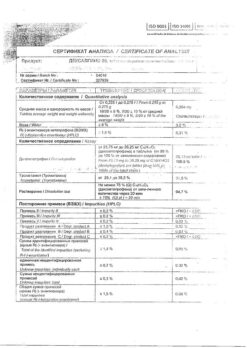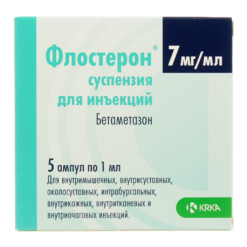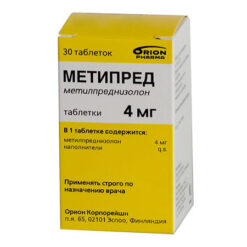No products in the cart.
Nurofen Express Lady, 400 mg 12 pcs
€6.27 €5.22
Description
Pharmacotherapeutic group:
Non-steroidal anti-inflammatory drug (NSAID).
ATC code: M01AE01
Pharmacological properties
Pharmacodynamics:
The mechanism of action of ibuprofen, a derivative of propionic acid from the group of nonsteroidal anti-inflammatory drugs (NSAIDs), is due to the inhibition of the synthesis of prostaglandins – mediators of pain, inflammation and hyperthermia.
Indiscriminately blocks cyclooxygenase 1 (COX-1) and cyclooxygenase 2 (COX-2), thus inhibiting the synthesis of prostaglandins. It has a fast directed action against pain (analgesic), antipyretic and anti-inflammatory effect. In addition, ibuprofen reversibly inhibits platelet aggregation.
Pharmacokinetics:
Absorption – high, quickly and almost completely absorbed from the gastrointestinal tract (GIT). After taking the drug on an empty stomach the maximum concentration (Cmax) of ibuprofen in blood plasma is reached after 30-35 minutes.
Taking the drug with food may increase the time to reach the maximum concentration (TCmax). The binding to the blood plasma proteins is more than 90%.
Slowly penetrates into joint cavity, stays in synovial fluid creating higher concentrations in it than in blood plasma. After absorption about 60% of pharmacologically inactive R-form is slowly transformed into active S-form. It is metabolized in the liver. The half-life (T1/2) is 2 hours. It is excreted by the kidneys (not more than 1% unchanged) and, to a lesser extent, with the bile.
In elderly people there were no significant differences in the pharmacokinetic profile of the drug compared to younger people.
In limited studies ibuprofen was found in very low concentrations in breast milk.
Indications
Indications
Nurofen Express Lady is used:
for headaches and toothaches,
migraines,
painful menstruation,
neuralgia,
back pain,
muscle, rheumatic and other types of pain,
in case of fever, flu and colds.
Pharmacological effect
Pharmacological effect
Pharmacotherapeutic group:
non-steroidal anti-inflammatory drug (NSAID).
ATX code: М01АЭ01
Pharmacological properties
Pharmacodynamics:
The mechanism of action of ibuprofen, a derivative of propionic acid from the group of non-steroidal anti-inflammatory drugs (NSAIDs), is due to inhibition of the synthesis of prostaglandins – mediators of pain, inflammation and hyperthermic reaction.
Indiscriminately blocks cyclooxygenase 1 (COX-1) and cyclooxygenase 2 (COX-2), as a result of which it inhibits the synthesis of prostaglandins. It has a rapid, targeted effect against pain (analgesic), antipyretic and anti-inflammatory effects. In addition, ibuprofen reversibly inhibits platelet aggregation.
Pharmacokinetics:
Absorption is high, quickly and almost completely absorbed from the gastrointestinal tract (GIT). After taking the drug on an empty stomach, the maximum concentration (Cmax) of ibuprofen in the blood plasma is achieved after 30-35 minutes.
Taking the drug with food may increase the time to reach maximum concentration (TCmax). Communication with blood plasma proteins is more than 90%.
Slowly penetrates into the joint cavity, lingers in the synovial fluid, creating higher concentrations in it than in the blood plasma. After absorption, about 60% of the pharmacologically inactive R-form is slowly transformed into the active S-form. Metabolized in the liver. The half-life (T1/2) is 2 hours. Excreted by the kidneys (no more than 1% unchanged) and, to a lesser extent, with bile.
In elderly people, there were no significant differences in the pharmacokinetic profile of the drug compared to younger people.
In limited studies, ibuprofen has been found in breast milk at very low concentrations.
Special instructions
Special instructions
It is recommended to take the drug for the shortest possible course and in the minimum effective dose necessary to eliminate symptoms.
Active ingredient
Active ingredient
Ibuprofen
Composition
Composition
One film-coated tablet contains:
active ingredient – ibuprofen sodium dihydrate 512 mg (equivalent to ibuprofen 400 mg);
excipients:
croscarmellose sodium 60 mg,
xylitol 60 mg,
microcrystalline cellulose 60 mg,
magnesium stearate 16 mg,
colloidal silicon dioxide 4 mg;
shell composition:
carmellose sodium 1 mg, talc 48 mg, acacia gum 1.6 mg, sucrose 186.2 mg, titanium dioxide (E171) 3.3 mg, macrogol-6000 0.5 mg, red ink [Opacode S-1-15094] (shellac 41.49%, red iron oxide dye (E172) 31.00 %, butanol* 14.00%, isopropanol* 7.00%, propylene glycol 5.50%, aqueous ammonia 1.00%, simethicone 0.01%).
*Solvents that have evaporated after the printing process.
Pregnancy
Pregnancy
Nurofen Express Lady is not prescribed during pregnancy, breastfeeding and children under 12 years of age.
Contraindications
Contraindications
Hypersensitivity to ibuprofen or any of the components included in the drug.
Complete or incomplete combination of bronchial asthma, recurrent polyposis of the nose and paranasal sinuses and intolerance to acetylsalicylic acid or other NSAIDs (including a history).
Erosive and ulcerative diseases of the gastrointestinal tract (including gastric and duodenal ulcers, Crohn’s disease, ulcerative colitis) or ulcerative bleeding in the active phase or in history (two or more confirmed episodes of peptic ulcer or ulcerative bleeding).
A history of bleeding or perforation of a gastrointestinal ulcer caused by the use of NSAIDs.
Severe heart failure (class IV according to the New York Heart Association (NYHA) classification.
Severe liver failure or active liver disease.
Severe renal failure (creatinine clearance <30 ml/min), confirmed hyperkalemia.
Decompensated heart failure; period after coronary artery bypass surgery.
Cerebrovascular or other bleeding.
Fructose intolerance, glucose-galactose malabsorption, sucrase-isomaltase deficiency.
Hemophilia and other bleeding disorders (including hypocoagulation), hemorrhagic diathesis.
Pregnancy (III trimester).
Children's age up to 12 years.
With cautionIf you have the conditions listed in this section, you should consult your doctor before using the drug.Concomitant use of other NSAIDs, a history of a single episode of gastric ulcer or gastrointestinal ulcer bleeding; gastritis, enteritis, colitis, the presence of Helicobacter pylori infection, ulcerative colitis; bronchial asthma or allergic diseases in the acute stage or in history – bronchospasm may develop; systemic lupus erythematosus or mixed connective tissue disease (Sharpe’s syndrome) – increased risk of aseptic meningitis; chicken pox; renal failure, including dehydration (creatinine clearance less than 30-60 ml/min), nephrotic syndrome, liver failure, liver cirrhosis with portal hypertension, hyperbilirubinemia, arterial hypertension and/or heart failure, cerebrovascular diseases, blood diseases of unknown etiology (leukopenia and anemia), severe somatic diseases, dyslipidemia/hyperlipidemia, diabetes mellitus, peripheral arterial disease, smoking, frequent alcohol consumption, phenylketonuria or phenylalanine intolerance, concomitant use of drugs that may increase the risk of ulcers or bleeding, in particular oral corticosteroids (including prednisolone), anticoagulants (including warfarin), selective serotonin reuptake inhibitors (including citalopram, fluoxetine, paroxetine, sertraline) or antiplatelet agents (including acetylsalicylic acid, clopidogrel), pregnancy I-II trimester, breastfeeding period, old age.
Side Effects
Side Effects
The risk of side effects can be minimized if the drug is taken in a short course, at the minimum effective dose required to eliminate symptoms.
Side effects are predominantly dose-dependent.
The following adverse reactions were observed with short-term use of ibuprofen in doses not exceeding 1200 mg/day (6 capsules). When treating chronic conditions and with long-term use, other adverse reactions may occur.
The incidence of adverse reactions was assessed based on the following criteria: very common (≥ 1/10), common (from ≥ 1/100 to < 1/10), uncommon (from ≥ 1/1000 to < 1/100), rare (from ≥ 1/10,000 to < 1/1000), very rare (< 1/10 000), frequency unknown (insufficient data to estimate frequency).
Blood and lymphatic system disorders
Very rare: hematopoietic disorders (anemia, leukopenia, aplastic anemia, hemolytic anemia, thrombocytopenia, pancytopenia, agranulocytosis). The first symptoms of such disorders are fever, sore throat, superficial oral ulcers, flu-like symptoms, severe weakness, nosebleeds and subcutaneous hemorrhages, bleeding and bruising of unknown etiology.
Immune system disorders
Uncommon: hypersensitivity reactions – nonspecific allergic reactions and anaphylactic reactions, reactions from the respiratory tract (bronchial asthma, including its exacerbation, bronchospasm, shortness of breath, dyspnea), skin reactions (itching, urticaria, purpura, Quincke’s edema, exfoliative and bullous dermatoses, including toxic epidermal necrolysis syndrome Lyell), Stevens-Johnson syndrome, erythema multiforme), allergic rhinitis, eosinophilia.
Very rare: severe hypersensitivity reactions, including swelling of the face, tongue and larynx, shortness of breath, tachycardia, hypotension (anaphylaxis, angioedema or severe anaphylactic shock).
Gastrointestinal disorders
Uncommon: abdominal pain, nausea, dyspepsia (including heartburn, bloating).
Rare: diarrhea, flatulence, constipation, vomiting.
Very rare: peptic ulcer, perforation or gastrointestinal bleeding, melena, hematemesis, in some cases fatal, especially in elderly patients, ulcerative stomatitis, gastritis.
Frequency unknown: exacerbation of colitis and Crohn’s disease.
Disorders of the liver and biliary tract
Very rare: liver dysfunction (especially with long-term use), hepatitis and jaundice.
Renal and urinary tract disorders
Very rare: acute renal failure (compensated and decompensated), especially with long-term use, in combination with an increase in the concentration of urea in the blood plasma and the appearance of edema, hematuria and proteinuria, nephritic syndrome, nephrotic syndrome, papillary necrosis, interstitial nephritis, cystitis.
Nervous system disorders
Uncommon: headache.
Very rare: aseptic meningitis.
Cardiovascular disorders
Frequency unknown: heart failure, peripheral edema, with long-term use there is an increased risk of thrombotic complications (for example, myocardial infarction), increased blood pressure.
Disorders of the respiratory system and mediastinal organs
Frequency unknown: bronchial asthma, bronchospasm, shortness of breath.
Others
Very rare: edema, including peripheral edema.
Laboratory indicators
hematocrit or hemoglobin (may decrease)
bleeding time (may increase)
plasma glucose concentration (may decrease)
creatinine clearance (may decrease)
plasma creatinine concentration (may increase)
activity of “liver” transaminases (may increase)
If side effects occur, you should stop taking the drug and consult a doctor.
Interaction
Interaction
The simultaneous use of ibuprofen with the following drugs should be avoided:
Acetylsalicylic acid: with the exception of low doses of acetylsalicylic acid (no more than 75 mg per day) prescribed by a doctor, since combined use may increase the risk of side effects.
With simultaneous use, ibuprofen reduces the anti-inflammatory and antiplatelet effect of acetylsalicylic acid (an increase in the incidence of acute coronary insufficiency in patients receiving small doses of acetylsalicylic acid as an antiplatelet agent is possible after starting ibuprofen).
Other NSAIDs, including selective COX-2 inhibitors: The simultaneous use of two or more NSAIDs should be avoided due to a possible increased risk of side effects.
Use with caution simultaneously with the following medications:
Anticoagulants and thrombolytic drugs: NSAIDs may enhance the effect of anticoagulants, in particular warfarin and thrombolytic drugs.
Antihypertensives (ACE inhibitors and angiotensin II antagonists) and diuretics: NSAIDs may reduce the effectiveness of drugs in these groups. Diuretics and ACE inhibitors may increase the nephrotoxicity of NSAIDs.
Glucocorticosteroids: increased risk of gastrointestinal ulcers and gastrointestinal bleeding.
Antiplatelet agents and selective serotonin reuptake inhibitors: increased risk of gastrointestinal bleeding.
Cardiac glycosides: simultaneous administration of NSAIDs and cardiac glycosides can lead to worsening heart failure, a decrease in glomerular filtration rate and an increase in the concentration of cardiac glycosides in the blood plasma.
Lithium preparations: there is evidence of the likelihood of an increase in the concentration of lithium in the blood plasma during the use of NSAIDs.
Methotrexate: there is evidence of the likelihood of an increase in the concentration of methotrexate in the blood plasma during the use of NSAIDs.
Cyclosporine: increased risk of nephrotoxicity when NSAIDs and cyclosporine are co-administered.
Mifepristone: NSAIDs should be started no earlier than 8-12 days after taking mifepristone, as NSAIDs may reduce the effectiveness of mifepristone.
Tacrolimus: Concomitant use of NSAIDs and tacrolimus may increase the risk of nephrotoxicity.
Zidovudine: Concomitant use of NSAIDs and zidovudine may result in increased hematotoxicity. There is evidence of an increased risk of hemarthrosis and hematomas in HIV-positive patients with hemophilia who received concomitant treatment with zidovudine and ibuprofen.
Quinolone antibiotics: Patients receiving concomitant treatment with NSAIDs and quinolone antibiotics may have an increased risk of seizures.
Cefamandole, cefoperazone, cefotetan, valproic acid, plicamycin: increased incidence of hypoprothrombinemia.
Drugs that block tubular secretion: decreased excretion and increased plasma concentrations of ibuprofen.
Inducers of microsomal oxidation (phenytoin, ethanol, barbiturates, rifampicin, phenylbutazone, tricyclic antidepressants): increased production of hydroxylated active metabolites, increased risk of severe intoxication.
Microsomal oxidation inhibitors: reducing the risk of hepatotoxicity.
Oral hypoglycemic drugs and insulin, sulfonylurea derivatives: enhanced effect.
Antacids and cholestyramine: decreased absorption.
Caffeine: increased analgesic effect.
Overdose
Overdose
In children, overdose symptoms may occur after taking a dose exceeding 400 mg/kg body weight. In adults, the dose-dependent effect of overdose is less pronounced. The half-life of the drug in case of overdose is 1.5-3 hours.
Symptoms: nausea, vomiting, epigastric pain or, less commonly, diarrhea, tinnitus, headache and gastrointestinal bleeding. In more severe cases, manifestations from the central nervous system are observed: drowsiness, rarely – agitation, convulsions, disorientation, coma.
In cases of severe poisoning, metabolic acidosis and increased prothrombin time, renal failure, liver tissue damage, decreased blood pressure, respiratory depression and cyanosis may develop. In patients with bronchial asthma, exacerbation of this disease is possible.
Treatment: symptomatic, with mandatory maintenance of airway patency, monitoring of ECG and vital signs until the patient’s condition is normalized.
Oral use of activated charcoal or gastric lavage is recommended within 1 hour after taking a potentially toxic dose of ibuprofen.
If ibuprofen has already been absorbed, an alkaline drink may be prescribed in order to eliminate the acidic derivative of ibuprofen by the kidneys, forced diuresis. Frequent or prolonged seizures should be treated with intravenous diazepam or lorazepam. If bronchial asthma worsens, the use of bronchodilators is recommended.
Storage conditions
Storage conditions
Store at a temperature not exceeding 25 °C.
Keep out of the reach of children.
Shelf life
Shelf life
2 years
Manufacturer
Manufacturer
Reckitt Benckiser Healthcare International Ltd, UK
Additional information
| Shelf life | 2 years |
|---|---|
| Conditions of storage | Store at a temperature not exceeding 25 ° C. Keep out of reach of children. |
| Manufacturer | Reckitt Benckiser Healthcare International Ltd, United Kingdom |
| Medication form | pills |
| Brand | Reckitt Benckiser Healthcare International Ltd |
Related products
Buy Nurofen Express Lady, 400 mg 12 pcs with delivery to USA, UK, Europe and over 120 other countries.


